I don't know if an attempt of an answer after more than five years is of any use to you, but sorry, I made my Master in CS only recently :-) In the wake of that, I played around exactly with your question.
Consider the sequence S(3,2) (it should be obvious how S(m,n) works generally if you graph it): S(3,2)=[5,13,6,14,3,15,4,16,1,17,2,18,11,19,12,20,9,21,10,22,7,23,8,24]. Splay is so lousy on this sequence type that the competive ratio r to the "Greedy Future" algorithm (see Demaine) is S[infty,infty]=2. I was never able to get over 2 even though Greedy Future is also not completely optimal and I could shave off a few operations.
 (Legend: black,grey,blue: S(7,4); purple,orange,red: Splay must access these points too. Shown in the Demaine formulation.)
But note that your question is somewhat ill defined! If you ask for the absolutely worst sequence, then take e.g. the bit-reversal sequence, ANY tree algorithm needs O(n log n) for that. But if you ask for the competetive ratio r as implied in templatetypdef's answer, then indeed nobody knows (but I would make bets on r=2, see above).
Feel free to email me for details, I'm easily googled.
(Legend: black,grey,blue: S(7,4); purple,orange,red: Splay must access these points too. Shown in the Demaine formulation.)
But note that your question is somewhat ill defined! If you ask for the absolutely worst sequence, then take e.g. the bit-reversal sequence, ANY tree algorithm needs O(n log n) for that. But if you ask for the competetive ratio r as implied in templatetypdef's answer, then indeed nobody knows (but I would make bets on r=2, see above).
Feel free to email me for details, I'm easily googled.
